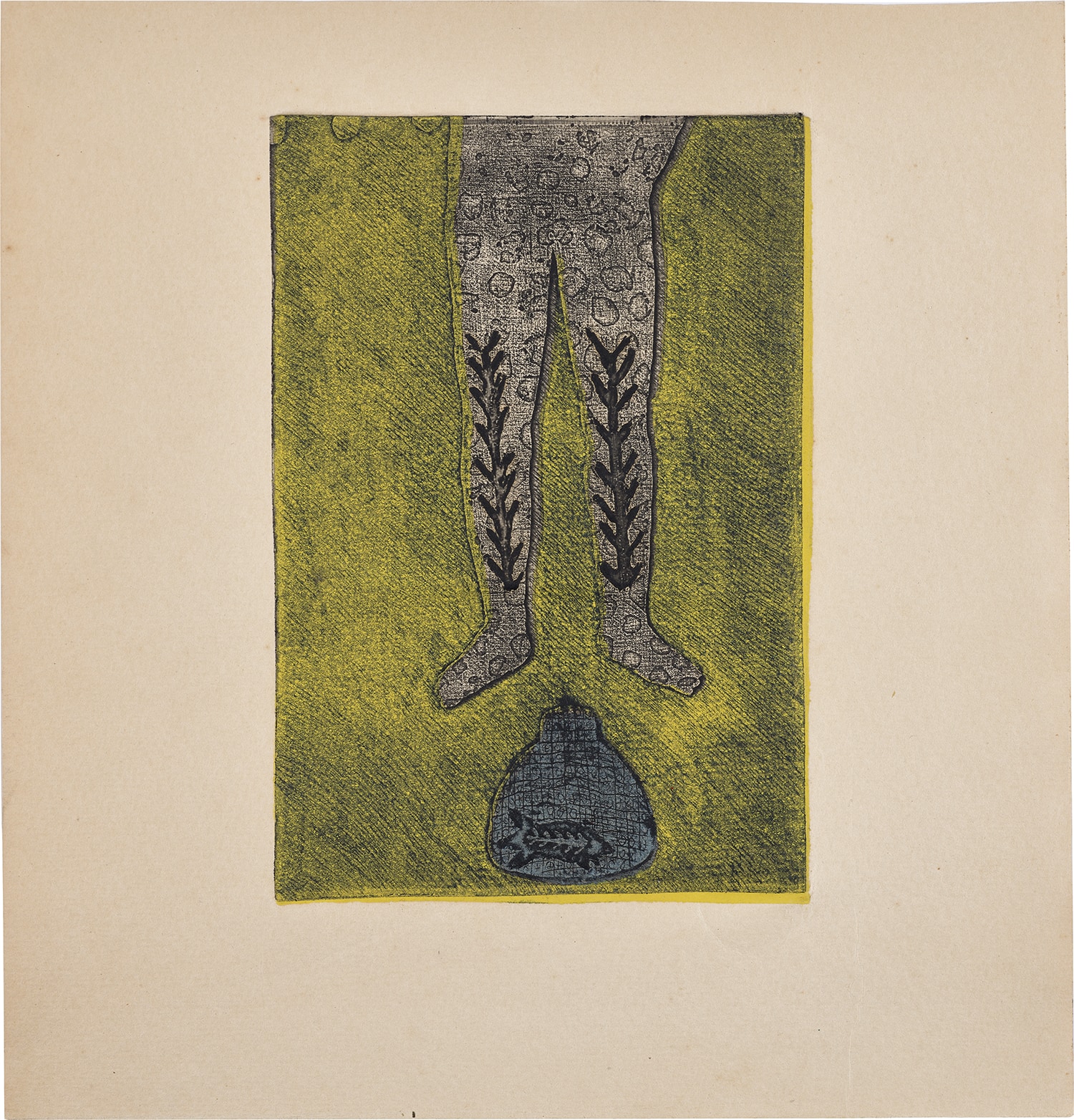



300
Belkis Ayón
Sin título [Piernas marcadas y botija con pez] (A. & V. 86.16)
1986
Collagraph, on wove Canson paper, with margins.
I. 7 3/8 x 5 1/8 in. (18.7 x 13 cm)
S. 10 1/2 x 10 in. (26.7 x 25.4 cm)
S. 10 1/2 x 10 in. (26.7 x 25.4 cm)
Published by the Escuela de Bellas Artes, San Alejandro, Cuba, with an accompanying certificate of authenticity issued by the Belkis Ayón Estate, unframed.